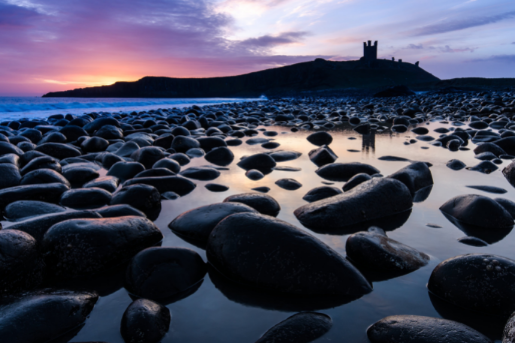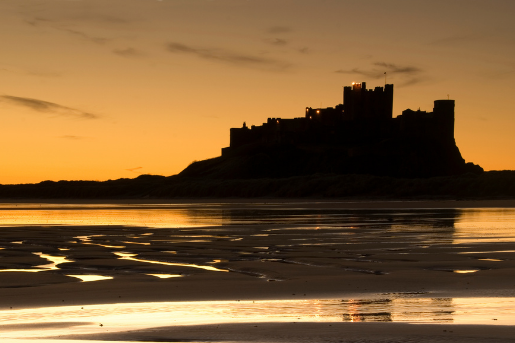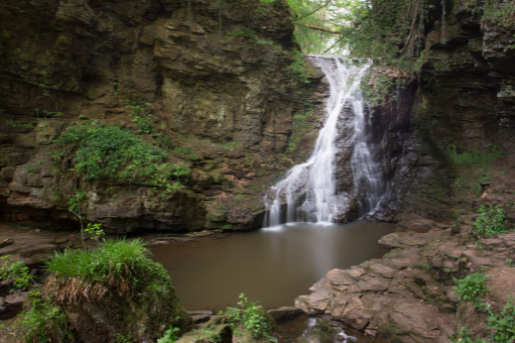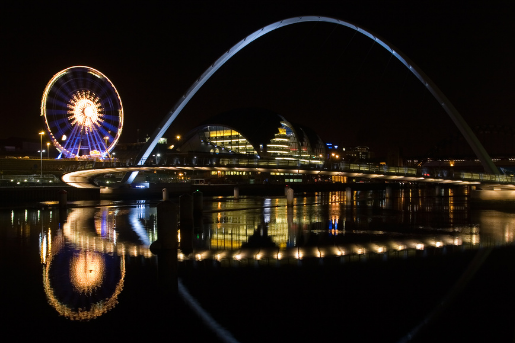Photography Hot Spots in Northumberland
At Herding Hill Farm we consider ourselves lucky to live so close to Hadrian’s Wall and the beautiful Northumberland landscapes. No matter what the time of year, the light and the scenery are spectacular. We are blessed with amazing sunsets and dark skies, which you can enjoy from the comfort of your own touring pitch, glamping pod, outdoor hot tub or luxury lodge. Haltwhistle is located at the mid-point of the country and is known as the Centre of Britain which means you can enjoy both sunsets and sunrises at certain times of the year with just a short travel. Many of our guests enjoy photographing the wonderful Northumbria landscapes and our 5-star Northumberland campsite is open all year round. Our location in the natural valley of the Whin Sill in the shadows of Hadrian’s Wall leads to some breath-taking natural light, especially with the Winter mist and low sun.
Northumberland is at a latitude
of 55°N which means that there is considerable seasonal variation in terms of
where the sun rises and sets, as well as the number of daylight hours. This
difference means that certain landscapes in Northumberland are often more
suited to photography at one particular time of the year than another which
means there is always something to photograph whenever you visit us!
So where would we recommend for
the best photography hot spots close to Herding Hill Farm?
Star Trails on Hadrian's Wall
Without a doubt the Unesco World Heritage site Hadrian’s Wall is one of the most photographed places in the UK. Sycamore Gap, one of the most famous trees in England, in a dramatic gap, with Hadrian’s Wall rising to both sides, is less than a 5-minute drive from our campsite and is a wonderful walk from The Sill National Landscape Discovery Centre and Steel Rigg. It is best photographed from the South side of the wall.
The low light pollution in the
area means it is a great place to take photos of with the dark Northumberland
skies silhouetted in the gap above and around the sycamore tree, if you are
lucky to have clear skies. Many photographers aim for the ultimate photo of
star trails over Sycamore Gap which are normally created by taking a series of
consecutive photographs over an hour or more, then merging them using special
software. The famous tree creates the fixed foreground for the photo required
for the star trails. The more visible stars the better the trail hence why the
Northumberland dark skies are perfect for astrophotography. The length of trail
depends on how many photos you take. Really lucky photographers may even catch
a glimpse of the aurora borealis over Sycamore Gap, otherwise known as the
Northern Lights. The Twice Brewed Inn, a short drive from the campsite provide astrophotography
courses.
Our Northumberland Castles & Coastlines
Northumbria is blessed with so many breath-taking castles on dramatic land-crops or amongst rugged scenery. The coastal village of Craster, with its pretty fishing harbour, is photogenic in its own right, but it's the view North across to Dunstanburgh Castle that is particularly good in Winter, when the weather is moody and the light golden. The atmospheric castle and imposing skyline look particularly startling when captured in mono. There are also plenty of rock pools. You can also get a fabulous composition of the castle looking back from the gorgeous golden sands of Embleton Bay, which stretches North from the castle using the rocks in the foreground. The Northumberland coast is a a fabulous place to watch the sunrise if you are an early riser.

Further North Bamburgh Castle is stunning whether captured from its long sandy beach using the reflections on the sand or with the grassy dunes or wildflowers such as pink campion and red poppy in the foreground. The Northumberland coast faces East which means you can enjoy some fabulous sunrises.

Hadrian's Wall Sunsets
We get some wonderful Northumberland sunsets, March to September being the best months, which you can enjoy from the comfort of your own pitch, glamping pod or stargazing pod at Herding Hill Farm. Cawfields Quarry, Walltown Country Park and Steel Rigg are all close by. The evening doesn’t have to be completely clear; clouds can add dimension and drama to a sunset photo. Ensure that you are not too far away from your car as the night can quickly get dark once the sun has set and the ground underfoot may be uneven. Ensure that you know when sunset will happen.
Avoid looking directly at the
sunset, not only could it harm your retinas but it may also damage the camera
sensor. Remember that the sun doesn’t necessarily need to be the focus of your
photo. The best sunset pictures showcase the effects of the sunset on nearby
objects, or on the surrounding landscape.
If you are beginner use your camera’s aperture priority mode, then the camera will automatically change the shutter speed for you. Set the aperture number high (between f/11 and f/16) to get the largest possible depth of field and keep as much of the scene in focus as possible. Keep your ISO as low as possible in order to avoid graininess. If your camera is struggling to focus in the low light you may need to switch to manual focus.

Hareshaw Linn, Bellingham
Following the gentle Hareshaw Linn walk, there are at least six bridges through ancient woodland before you reach this majestic 9m high waterfall. The area is a Site of Special Scientific Interest due to its rare ferns and lichen and it’s great for wildlife, with red squirrels, wood warblers, great spotted woodpeckers, badgers and bats all been spotted here.

The challenge with photographing waterfalls is to capture the motion of the water. You'll need to use a slow shutter speed - generally somewhere from 0.3 seconds up to several seconds. A good rule of thumb is to start with a speed of 1 second and take a test shot, adjusting until you are happy with the level of blurring. You’ll need a tripod to achieve the best results. Set your ISO as low as it will go (typically around ISO 100) to avoid overexposure and to reduce the amount of digital noise. Using a narrow aperture lets you use a longer exposure time and gives the maximum depth of field, allowing you to keep as much of the scene in focus as possible. Bright sunlight can ruin a waterfall photograph, as the intense light casts strong shadows, making it difficult to get the exposure right. It can also cause hundreds of reflections in the water and wet scenery, which will show up as tiny white dots. Shoot at dawn or dusk or an overcast day for the best results when it is easier to get more exposure. Avoid pointing your camera directly at the waterfall, try to find a more interesting composition such as photographing from high above or behind, through trees or bushes or from just above the stream. Taking the shot in landscape also allows you to be more creative and take in more of the surrounding scenery in your composition.
The lights of the Newcastle Quayside
Whilst we love living in the countryside it is easy to forget that the cosmopolitan city of Newcastle, with its iconic bridges and riverside, is less than an hour’s drive away. There are 7 riverside bridges in Newcastle, of which two are railway bridges with no pedestrian access. Walking the riverfront and up the steep streets that surround the famous quayside give photographers a huge array of vantage points and different shots. Dusk is an ideal time to photograph the city. The river creates reflections and changes in colour as the sky and light levels change from daylight to artificial light created by the city. The pedestrians only Gateshead Millennium Bridge, close to both the BALTIC Centre of Contemporary Art and The Sage is an ideal spot for photographs down the River Tyne and it changes colour itself at night. Alternatively, walk halfway over the High Level Bridge to get the best photo opportunity of the Tyne Bridge, with the added bonus of the Swing Bridge in the foreground and Millennium Bridge in the background.

